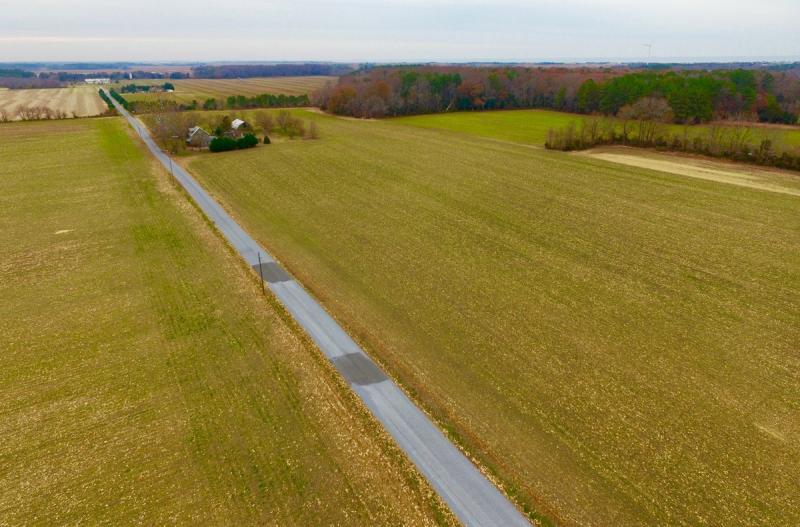The Sussex County Planning & Zoning Commission unanimously approved a controversial subdivision on the Groome United Methodist Church parcel along New Road outside Lewes.
The subdivision known as Tower Hill, proposed by New Road Ventures LLC, calls for 292 single-family units on the 134-acre parcel.
“I have put incredible hours and thought into this one,” said Commissioner Kim Hoey Stevenson. “I have tried as many ways as I could [to trim density]. Based on the ordinances that we have and the laws that are in place, I have done the best that I could.”
Under regulations for the environmentally sensitive developing district within the AR-1 zone, developers are allowed 2.17 units per acre. Hoey Stevenson said she was trying to find a way to cut the density back to 2 units per acre.
“This is not a change in zone or a conditional use, so we’re bound by what’s permitted in the zoning code on this one,” said Vince Robertson, planning and zoning commission attorney. “My concern is that if we said you can’t do what’s permitted by code, that is not enforceable in court, and we’d be in trouble on appeal.”
The property has been at the center of controversy since church officials announced their intentions to sell the parcel in September 2017. A group of Lewes-area residents formed the New Road Preservation Alliance in an effort protect the New Road and Great Marsh corridor, including the Groome property.
They joined earlier efforts to preserve 1,100 acres that included the Groome property and three others along the corridor, that had begun in 2014 but fell short of the developer's financial offer to the church.
Church officials plan to use funds from the sale of the inherited property to build a new church to replace a historic structure on Savannah Road in Lewes.
“The New Road Preservation Alliance is very disappointed with the decision,” said Debra Evalds, a member of the group. “The Sussex County Planning & Zoning commissioners gave a generous Christmas present to the out-of-state developer, while putting coal in the stockings of Lewes residents. It is a sad day for the Great Marsh and the Canary Creek, local wildlife, New Road-area residents, and all who love Lewes. This mega-development of 292 homes will change the look of New Road in a negative way and impact the quality of life for all of us who live nearby.”
New Road Ventures attorney Jim Fuqua said his client voluntarily paid $450,000 for an archeological survey of the parcel even though Delaware law does not require one.
During phase one in December 2017, dirt was dug up in the wooded sections and the field was surveyed after it was plowed. Archeologist Edward Otter also researched the history of the property.
During the second and third phases of the investigation during the summer, archeologists dug 163, 5-foot-by-5-foot pits by hand, removing 200 tons of soil.
Fuqua said the Prettyman family cemetery was located and delineated on the west side of the parcel.
As part of approval, commissioners required the Prettyman family cemetery be cleaned up and marked. Any collapsed graves must be filled and leveled. Informational markers must be placed in front of the cemetery telling the history of the Prettyman family, the colonial history and the history of Native American peoples who once occupied the land. If Native American remains are found, they are to receive the same treatment as the Prettyman cemetery.
Any artifacts associated with the Prettyman family or other colonial occupants found on the site must be donated to the state’s Division of Historical and Cultural Affairs or the Lewes Historical Society. Any Native American artifacts discovered must be donated to the Nanticoke Indian Museum.
A history of the property must be displayed inside the community’s clubhouse.
The commission also required a 20-foot landscaped or forested buffer around the entire perimeter of the property. The buffer increases to 50 feet along the northwest boundary, which is adjacent to agricultural land. Within the 50-foot buffer, the developer is required to build a 6-foot berm to provide a visual buffer from the neighboring parcel, which is used for hunting and sport shooting.
The planning and zoning commission has the final say on subdivision applications, which are not subject to a county council public hearing. Before the developer can begin construction, he must receive preliminary site plan and final site plan approval.
Ron MacArthur contributed to this article.
Editor’s note: This article has been updated.
Nick Roth is the news editor. He has been with the Cape Gazette since 2012, previously covering town beats in Milton and Lewes. In addition to serving on the editorial board and handling page layout, Nick is responsible for the weekly Delaware History in Photographs feature and enjoys writing stories about the Cape Region’s history. Prior to the Cape Gazette, Nick worked for the Delmarva Media Group, including the Delaware Wave, Delaware Coast Press and Salisbury Daily Times. He also contributed to The News Journal. Originally from Boyertown, Pa., Nick attended Shippensburg University in central Pennsylvania, graduating in 2007 with a bachelor’s degree in journalism. He’s won several MDDC awards during his career for both writing and photography. In his free time, he enjoys golfing, going to the beach with his family and cheering for Philadelphia sports teams.






















































